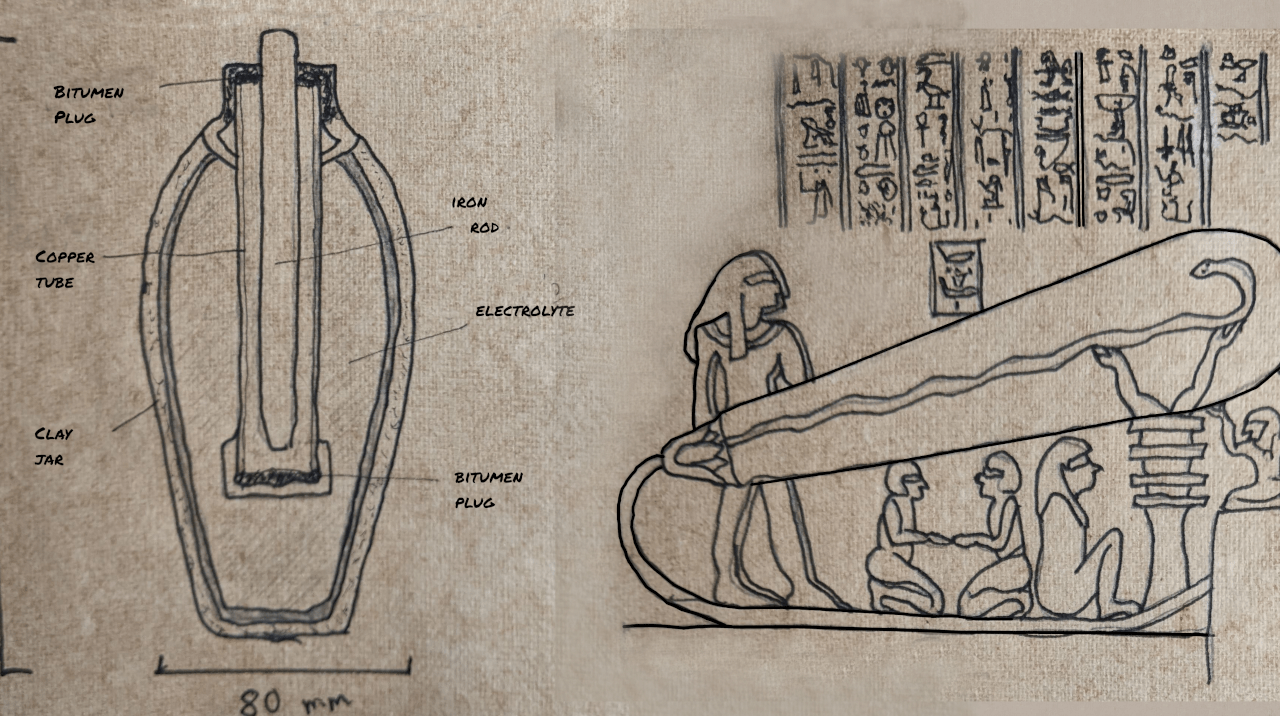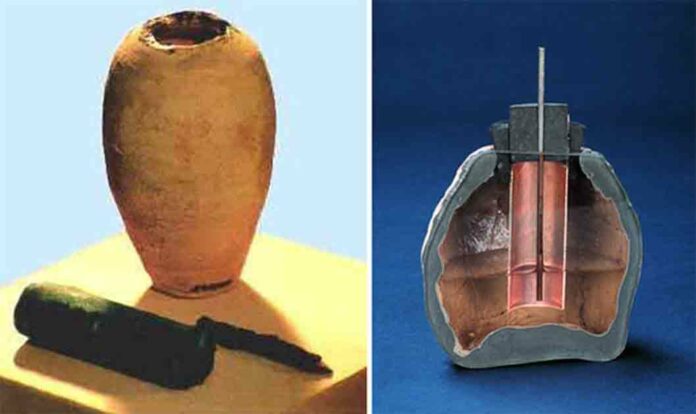The discovery of the Baghdad Battery has intrigued scholars and historians for decades, challenging traditional views on the technological and medical knowledge of ancient civilizations. The artifact, which some believe to be a primitive battery, has sparked debates about its true purpose, with theories ranging from electroplating to medical uses. This article explores the mystery surrounding the Baghdad Battery and examines the hypothesis that it may have been an ancient tool for electrotherapy, as suggested by Paul T. Keyser in the 1990s.
The Mysterious Baghdad Battery

The Baghdad Battery, also known as the Parthian Battery, is a clay pot containing a copper cylinder with an iron rod suspended inside. These artifacts, discovered during the 1936 excavations near Baghdad, date back to the Parthian period (250 BC – 224 AD). The device’s unique construction has led to speculation about its purpose, with some researchers proposing that it could have been used as a rudimentary electrical device.
Debating the Purpose of the “Baghdad Battery”
The function of the Baghdad Battery remains a topic of contention. Established academia largely dismisses the idea of it being an ancient battery, favoring more conventional explanations such as a storage container. However, alternative historians and enthusiasts propose that the artifact could have been used for electroplating or even as a primitive electrical device. The lack of electroplated objects found alongside the battery adds to the mystery, fueling ongoing debates about its true purpose.
Keyser’s Hypothesis: An Ancient Medical Device?

In the 1990s, Paul T. Keyser published an article in the Journal of Near Eastern Studies that challenged the conventional narrative of ancient ignorance in technology and medicine. Keyser suggested that ancient civilizations, including the Akkadians and Babylonians, might have used the Baghdad Battery for medical purposes. He proposed that electric currents generated by linking multiple batteries could have been used to treat ailments, similar to the use of electric eels by other ancient cultures.
The Case for Electrotherapy in Ancient Mesopotamia

Keyser’s theory is supported by historical accounts of ancient medical practices. For instance, in ancient Rome, the physician Scribonius Largus prescribed the use of electric fish to treat conditions such as gout and headaches. While electric fish were not native to the Persian Gulf or Mesopotamian rivers, Keyser posits that the Baghdad Battery could have been an alternative means of harnessing electricity for therapeutic purposes.
Challenging Conventional Narratives
Keyser’s hypothesis has been met with skepticism by the academic community, as it challenges the traditional view of human evolution from primitive beings to intelligent, creative humans. The concept of “Out of Place Artifacts” (OOPARTS), which includes the Baghdad Battery, has long been controversial, with mainstream scholars often dismissing such artifacts as anomalies or frauds.
The Legacy of the Baghdad Battery

The ongoing debates surrounding the Baghdad Battery reflect broader questions about the capabilities of ancient civilizations. As more evidence emerges, it becomes increasingly clear that our ancestors may have possessed knowledge and technologies far more advanced than previously believed. Unfortunately, many of these artifacts, including the Baghdad Battery, were lost or damaged during the war in Iraq, making it difficult to uncover the full story.
Conclusion
The mystery of the Baghdad Battery continues to captivate scholars and enthusiasts alike. Whether it was an ancient medical device, a tool for electroplating, or something entirely different, the artifact challenges our understanding of ancient technology and medicine. As we continue to explore the past, the Baghdad Battery serves as a reminder of the complexities and innovations of ancient civilizations that still puzzle us today.
